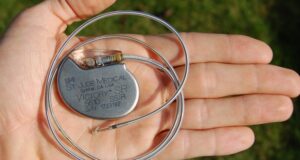New study finds obstructive sleep apnea may raise dementia risk, with aging women showing the highest vulnerability, underscoring the need for targeted interventions in sleep health and cognitive care.
 Study: Sex-specific dementia risk in known or suspected obstructive sleep apnea: A 10-year longitudinal population-based study. Image Credit: Andrey Popov / Shutterstock.com
Study: Sex-specific dementia risk in known or suspected obstructive sleep apnea: A 10-year longitudinal population-based study. Image Credit: Andrey Popov / Shutterstock.com
A new study published in SLEEP Advances determines the differential risk of dementia among men and women based on the presence of obstructive sleep apnea (OSA).
Dementia threat in the USA
Dementia refers to a progressive and incurable decline in cognitive function that is often accompanied by alterations in behavior due to neurodegenerative disease. Current estimates indicate that seven million Americans are diagnosed with dementia; therefore, it is crucial to identify modifiable risk factors for targeted interventions.
For example, women are more likely to develop dementia than men. Thus, environmental and comorbidity-related risk factors that more frequently affect women must be quantified to determine their role in this association.
OSA is defined as episodes of blocked breathing in the upper respiratory tract that lead to interrupted sleep and hypoxia during these episodes. OSA, the prevalence of which increases with age, is an established risk factor for dementia. Nevertheless, prospective sex-stratified studies in a population-based cohort over extended periods are needed.
About the study
The current study included data from 18,815 American men and women 50 years of age and older who were part of the Health and Retirement Study (HRS). The mean age of the study participants was 60 and 61 years for men and women, respectively.
All study participants were dementia-free at the start of the study. A validated algorithm was used to identify new cases of dementia using objective tests of cognition.
Known OSA was recorded if a prior diagnosis of OSA was reported by the participant. Since 80% of people with OSA are never diagnosed, an alternate method was used to identify suspected OSA cases with a positive outcome on the STOP-Bang OSA screening tool.
These data were analyzed to identify differences in the cumulative dementia incidence over ten years among men and women stratified by age and the presence of OSA.
Dementia incidence
Dementia was reported in 9% and 8% of women and men, respectively, whereas the prevalence of known or suspected OSA was 48%. OSA was significantly more likely to be present in men at 68% as compared to 31% of women. The mean educational status for OSA participants was lower relative to those without OSA or at a low risk of OSA.
Screening for OSA was positive for 29% of men and 30% of women with a prior OSA diagnosis. Comparatively, 10% of men and 7% of women had a diagnosis of OSA but screened negative with the STOP-Bang OSA screening tool.
The presence of OSA predicted a higher dementia risk between 60 and 84 years. By 80 years of age, women with OSA had a 4-7% higher cumulative incidence of dementia as compared to non-OSA adults, regardless of gender, as compared to a 2.5% higher cumulative incidence in men.
The difference in dementia risk increased with age among women but stabilized for men after an initial rise.
The population-attributable risk percent (PAR%) reflects the proportion of dementia cases attributable to OSA. PAR% was 10.3% and 13.2% in women and men, respectively, which reflects the increased risk of OSA in men.
After adjusting for age, the risk of dementia with OSA became weaker but remained significantly higher as compared to non-OSA adults. The cumulative incidence among women with suspected or known OSA was 3.7% higher as compared to 2.1% for men with known OSA.
Mechanism of dementia risk with OSA
OSA may increase the risk of Alzheimer’s disease (AD) progression and cognitive decline from any cause. This association has been attributed to the accumulation of tau protein and amyloid β42 (Aβ42) protein.
OSA and sleep disruption may also lead to chronic inflammation, which can subsequently disrupt microglial function with Aβ42 accumulation, increase the risk of atherosclerosis, and lead to elevated pro-inflammatory cytokines associated with brain shrinkage in AD.
OSA in women is more likely to cause reduced quality of life, poor sleep, fatigue, depression, cardiovascular disease (CVD) risk, and cognitive decline as compared to men with OSA. The risk of OSA increases after menopause, with increased age of menopause onset associated with a reduced risk of dementia.
Conclusions
The current population-based longitudinal study involved the analysis of objective dementia data to estimate the ten-year risk of dementia in adults with OSA. Taken together, the study findings indicate that OSA is a dementia risk factor in older adults, with women at an even higher risk than men.
The value of the observed association is increased by the careful search for undiagnosed OSA that accounts for 80% of these patients. These findings emphasize the importance of identifying and treating OSA as a modifiable risk factor for the onset of dementia.
Similar findings have been reported in previous studies, which suggest that positive airway pressure (PAP) could be protect OSA patients against mild cognitive impairment, as well as AD occurrence and progression.
Further research with larger and more diverse cohorts using longitudinal follow-up and objective sleep data and better statistical techniques are needed. These studies could provide important insights into the sex-stratified relationships developing over time between OSA and dementia. Identification of mediating factors could also lead to the development of targeted interventions to reduce dementia risk in older individuals with OSA.
Journal reference:
- Braley, T. J., Lyu, X., Dunietz, G. L., et al. (2024). Sex-specific dementia risk in known or suspected obstructive sleep apnea: A 10-year longitudinal population-based study. SLEEP Advances. doi:10.1093/sleepadvances/zpae077.




